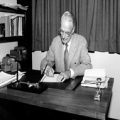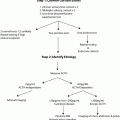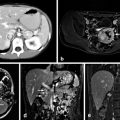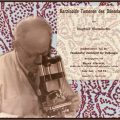John V. Verner Jr., MD. (Courtesy John and Sally Verner)
As relayed by Dr. John Verner [1], the groundwork for the discovery of the syndrome that was to later bear his name and that of Dr. Ashton “Archie” Morrison was the result of an intern research project that was required of the Internal Medicine residency house staff at Duke University. He credits the leadership of Dr. Eugene Stead Jr., the chair of the Department of Medicine, who encouraged clinical research and that his charges think creatively about clinical problems. Dr. Verner developed an interest in hypokalemia and asked the laboratory to alert him to any inpatients with low potassium levels. Three years a chief resident, he saw each patient admitted to the medical ward, and it was in this context that he evaluated the first of the two patients in the seminal report of the watery diarrhea, hypokalemia, and achlorhydria (WDHA) syndrome associated with islet cell neoplasms. This man had undergone a routine herniorraphy, yet he passed away from profuse cholera-like diarrhea with profound hypokalemia and uremia. This peculiar case was later presented at the Clinical Pathological Conference (CPC). It struck Dr. Verner that the provisional clinical diagnosis of “probable chronic laxative abuse” was preposterous. The finding on autopsy of a small acorn-sized benign nonbeta islet cell tumor was described as an incidental finding of no known clinical significance. Dr. Verner experienced a “eureka” epiphany and was sure in his mind that this tumor had been the cause of this patient’s demise.
As chance would have it, sitting beside Dr. Verner, at the CPC that day, was Dr. Morrison, the Markley Scholar and a pathologist at Duke. Dr. Morrison’s primary research interest was in kidney function, particularly in the way the kidneys handled protein and potassium [2]. He was also intrigued by this case. A second similar case was presented shortly thereafter giving birth to the idea that this was a distinct and previously unrecognized clinical syndrome. Dr. Verner reviewed the chart of a 19-year-old man who had been recently discharged from Duke Medical Center from his 19th admission for profuse diarrhea and hypokalemia. Dr. Verner discovered that the patient had missed an appointment with his psychiatrist because he had been admitted to another hospital where he subsequently died. The autopsy findings of this patient also included a small benign islet cell tumor.
Dr. Verner then embarked on a detailed search of the existing literature and was excited to find that this clinical pathologic syndrome had not been previously described. He and Dr. Morrison presented their manuscript to Dr. Stead who recognized its obvious significance and importance. He recommended that their article be submitted to the American Journal of Medicine where it was promptly published in 1958 [3]. Dr. Stead also directed Dr. Verner to submit and subsequently present their findings at a meeting of the American Federation for Clinical Research in Atlantic City on May 4, 1958. An additional report followed in 1974 in which Drs. Verner and Morrison amassed and detailed an additional 55 cases on nonbeta islet cell-induced watery diarrhea and hypokalemia [4].
Dr. John Victor Verner Jr. was born on April 26, 1927, in Greenville North Carolina. From 1944 to 1947, during World War II, Verner served as a second lieutenant in the infantry. He went on to pursue his education at Duke University where he matriculated in 1947 and then earned his BA degree in premedical studies in 1950. He attended the Duke University School of Medicine graduating with his MD degree in 1954. He stayed on, doing an internship year in internal medicine from 1954 to 1955. Verner then went to the University of Michigan in Ann Arbor from 1955 to 1956 to serve as a junior resident in internal medicine before returning to Duke as a senior resident from 1956 to 1957 and then as an instructor and chief resident in internal medicine until 1958 (Fig. 1).
Verner then signed on to work with Dr. Frank L. Engel who was a professor of medicine and the director of the division of endocrinology. John worked in Dr. Engel’s laboratory as an Associate American College of Physicians Research Fellow from 1958 to 1959. He received a stipend of US$ 4500. He made an excellent impression on Dr. Engel who observed that Verner showed, “considerable skill in design and conduct of his experiments.” In the clinic, Engel commented that he was “quick, bright and very enthusiastic, and carries out his work with care and precision.” They published several papers together on vitamin D intoxication [5], recurrent hyperparathyroidism [6], and glucose uptake in adipose cells [7]. John applied for and received a fellowship award from the American Diabetes Association but declined the honor because he was appointed to the full-time faculty at Duke University in the Department of Medicine. Engel assigned Verner the considerable task of reorganizing their diabetes clinic and teaching program. From mutual correspondence in the years that followed, it is evident that Verner viewed Engel as his mentor and they maintained a close, cordial relationship.
Verner had a distinguished career in medicine beyond his important discovery of the syndrome that bears his name. He was awarded the Distinguished Faculty Award by Duke University. In 1962, Verner left Duke and moved to the Watson Clinic in Lakeland, Florida. He was a member of many important medical and scientific societies. He held regional and national offices including the chairman of the Department of Medicine at the Lakeland General Hospital from 1969 to 1971. Verner was the president of the Florida Society of Internal Medicine from 1972 to 1973. He was a trustee on the board of the American Society of Internal Medicine from 1974 to1976 and a governor for the American Board of Internal Medicine from 1975 to 1981. He also served his local community as a director of the local Greater Lakeland Chamber of Commerce, a board member of the First United Methodist Church of Lakeland, and as president of the local chapter of the Salvation Army. In 1987, John Verner Jr. retired from the practice of medicine and continued to live in Lakeland Florida with his wife Sally. They have four children.
Stay updated, free articles. Join our Telegram channel

Full access? Get Clinical Tree







